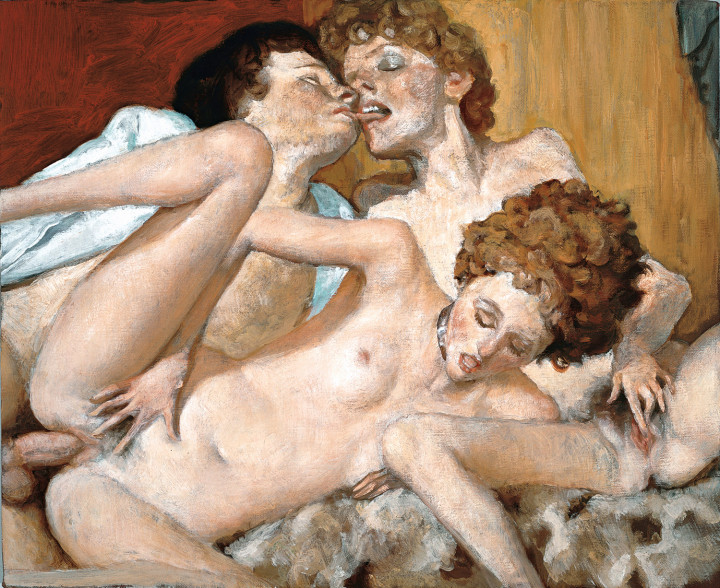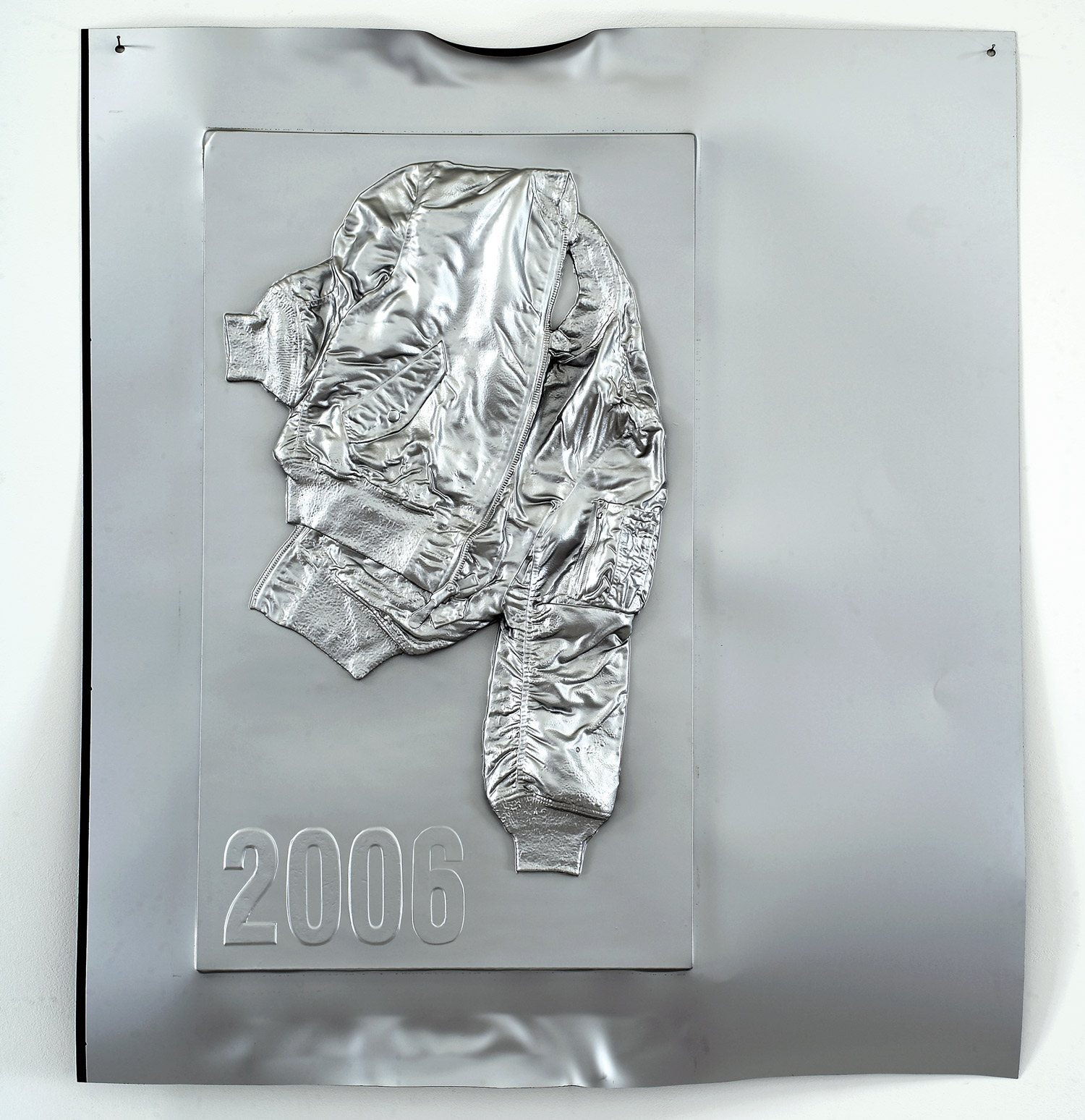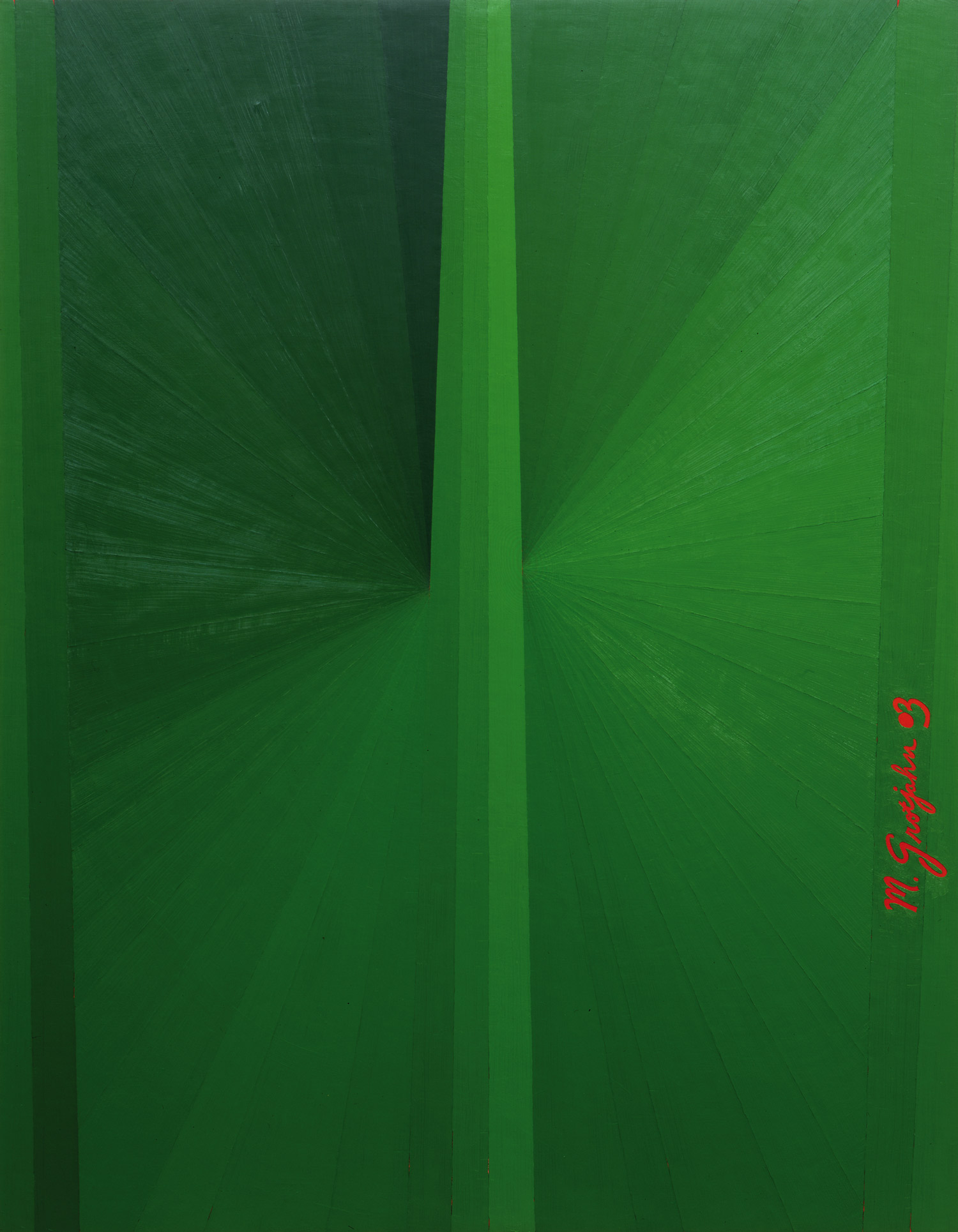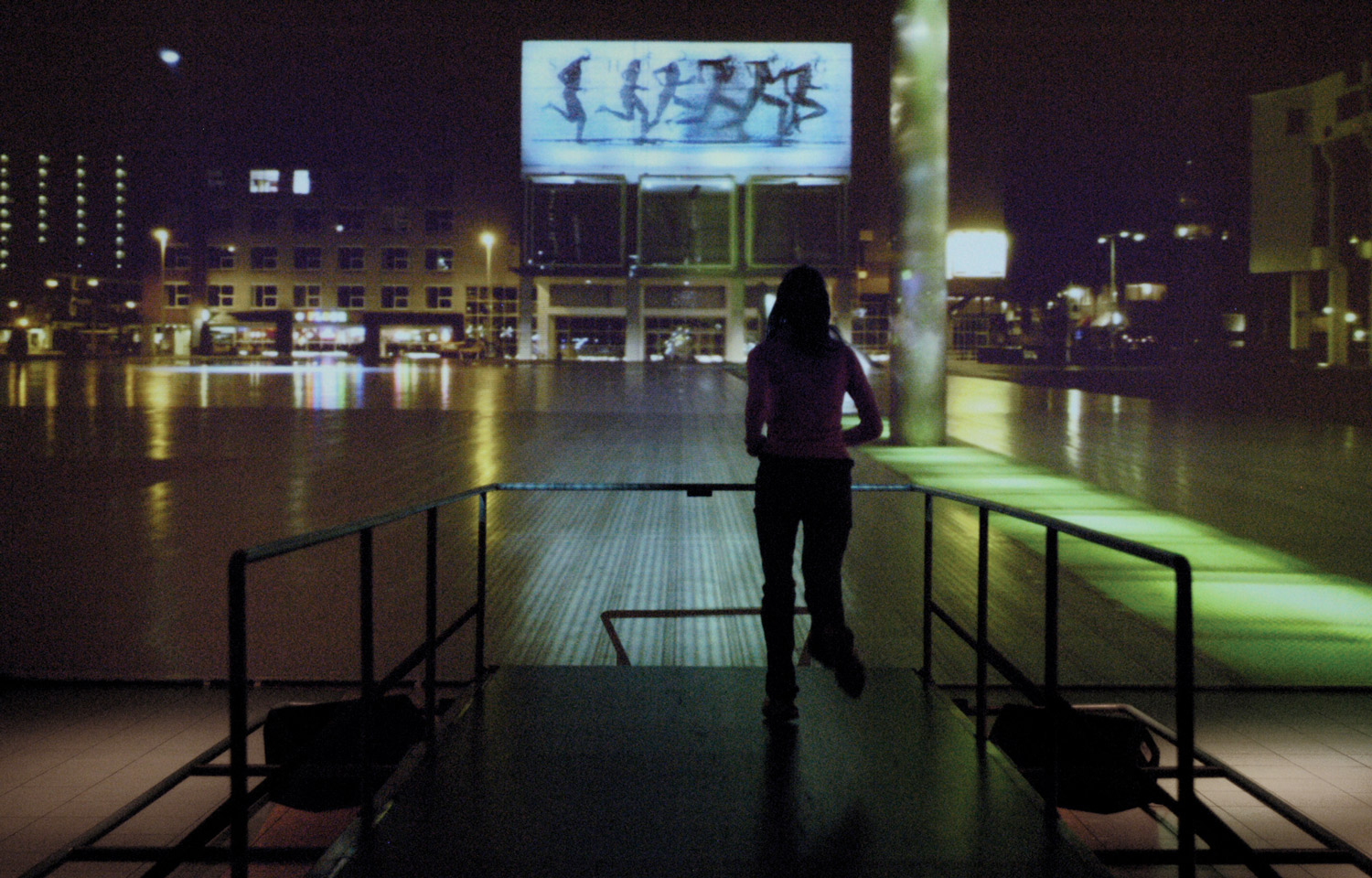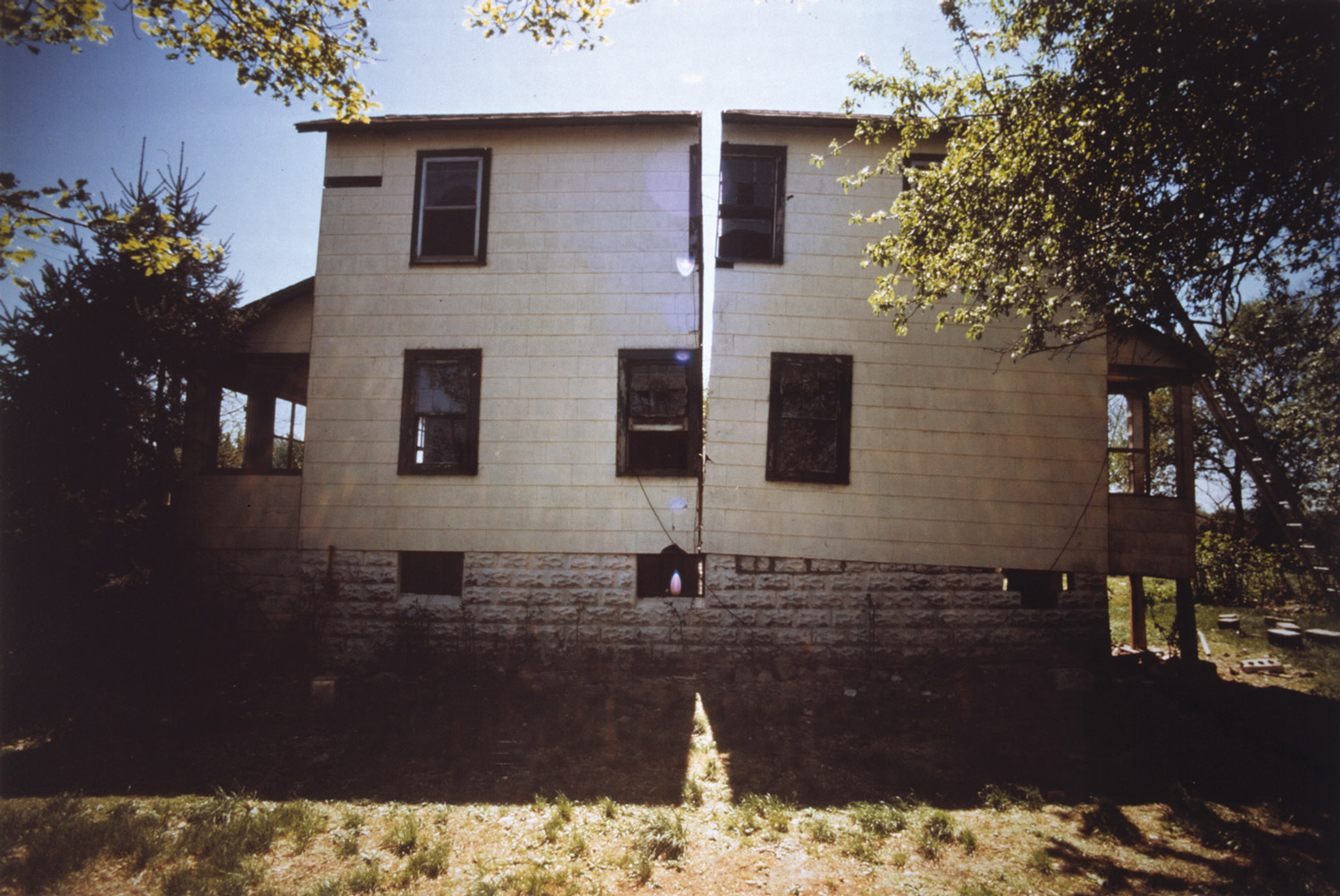
New Spaces
This past November, the doors of the Hessel Museum of Art were opened at Bard College, the prestigious contemporary art school, about an hour drive from New York. The Center for Curatorial Studies, founded more than ten years ago by a grant from Marieluise Hessel, has now been provided with an exhibition space that will display part of the American art patron’s collection. The museum, along with ten new galleries, is an expansion of the already existing Center for Curatorial Studies, a structure without any particular architectural qualities, designed by Jim Goettsch. Hessel began her contemporary art collection in the early ‘60s, falling in love with various movements like Pop art, Arte Povera, and Pattern Painting; she continued collecting until the early ’90s. The collection currently consists of 1,700 works by such notable artists as Carl Andre, Janine Antoni, Vanessa Beecroft, Alighiero Boetti, Louise Bourgeois, Francesco Clemente, Dan Flavin, Nan Goldin, Felix Gonzalez-Torres, Mona Hatoum, Robert Mapplethorpe, Paul McCarthy, Pipilotti Rist, Cindy Sherman, Kiki Smith and Rosemarie Trockel. The day of the inauguration, some pessimists maintained that the Hessel Museum was too difficult to reach from Manhattan and thus was destined to become a sort of cathedral in the desert, one that would attract few followers. But in reality, the question of turnout could prove a false problem; the Hessel Museum of Art is not an exhibition space in the classic sense, but one born in an educational context, meant to become an integral part of a pedagogical plan and an attempt at intellectual stimulation. Along with the ten new galleries, the Hessel collection should furnish visiting curators and Bard students with all of the necessary instruments to develop an experimental approach to the curatorial activity galleries. This task will be taken on by a promising new generation, as well as by professional curators, seeking to drag the exhausted New York contemporary art public into new panoramas. We will have to wait and see.
Back in New York, the network of contemporary art museums is in a phase of reorganization. It seems that the Whitney Museum, for example, is considering the idea of dividing into two parts and opening another imposing exhibition space downtown, in the West Village, dedicated to its most recent works. This new space would coexist with the New Museum, which is planning to inaugurate a new space on the Lower East Side near the end of 2007. At the moment, the New Museum’s plans are the more likely of the two — the new space is in full construction, with an investment of about 50 million dollars. In the arc of a year, the Lower East Side, an area that already has a certain amount of buzz, will undergo a radical shift, becoming a fundamental pole of contemporary art in the city. In addition, the Dia Center for the Arts, after having left a beautiful and historical location on 22nd Street and moving upstate to Beacon, is thinking of coming back to Manhattan. To date, however, the search is not going well. It should also be said that, considering reconstruction time and also the reorganization of an eventual office, the Dia will not be able to return to New York before 2010.
The Barile Foundation
On the subject of curatorial activity — it might be interesting someday to compose a list of the top ten curatorial ideas that have been most abused, a list of ideas that have been continuously recycled according to a mechanism that is as punctual as it is boring. In New York, for example, in the midst of a season that is already not very exciting, P.S.1 had the bright idea of proposing “The Gold Standard,” an entire show composed of gold works! Amongst the least interesting curatorial approaches, that of color is quite possibly the worst: exhibitions on white and exhibitions on red were shown on every corner of the planet ten years ago. Everyone has seen at least one of these shows. This latest edition pretends to assume symbolic and esoteric characteristics; gold, as the press release states, is a symbol of power and well-being, is the principal alchemical element, has always been associated with the sacred, and on and on with one stereotype after the other. Against a background of noises and supporting works, however, there is one particularly interesting work realized in this precious material — Marcel Broodthaers’ ingot, from 1971. It consists of a gold ingot, weighing a kilo, into which is carved the figure of an eagle, the symbol of the Museum of the Musée d’Art Moderne, Départment des Aigles, a fictitious museum founded by the artist himself in 1968. The original idea was to sell various gold ingots, according to the stipulations of a contract drawn up by Broodthaers. Through the idea of price — which was set at twice the price of the current value of gold — the artist began a game of meaning between the real value of gold and the value of the artwork, between the work as a piece of art and it’s reduction to a consumer good.

The Confusionists
If Broodthaers played with the transformation of the value of gold, John Bock has instead dedicated years to giving artistic dignity to trash. The artist returns to Anton Kern with his fourth solo show, but this time instead of transforming the gallery into one of his typical claustrophobic spaces, he tore down the wall and transferred almost the entire exhibition on the roof. The idea is certainly not new, the list of artists who have torn down gallery and museum ceilings is long enough to fill this page, but amongst Bock’s boilers, heating tubes, and nonsensical and intricate installations, the collection succeeds in giving the sensation of physically traversing the labyrinthine mind of the German artist. In the gallery, a video shows Bock walking around in an apartment filled to capacity with newspapers and scraps of paper, in the company of a ghost called “Golden Man” and a mummified skeleton. This theater of the absurd, between the compulsive accumulation of objects and the obsessive repetition of impossible gestures, is represented in its most characteristic, and, to be honest, most predictable form.
At The Kitchen, Christian Jankowski, the other enfant terrible of German art, seems instead to lose himself behind certain stereotypes. His entire solo show revolves around a humorous re-reading of the psychology that is key to the horror genre. The idea is old and hackneyed, and through video, photography and threatening sculpture, Jankowski at the end offers yet another banal sequel to neo-gothic taste.
That said, the German artist is always able to create strong images, as when, in a silent 16mm film, he sits at a table to play chess with Frankenstein. In this case, the refined evocation of certain twilight atmospheres of the German expressionist cinema, gives the work a taste that is more introspective and poetic.
Los Angeles artist Evan Holloway often works with waste materials like John Bock, but he does not look for chaos, the short-circuit of logic, and disorder, but, on the contrary, assembles inconsequential objects, creating sculptures characterized by a notable formal intelligence. On the occasion of his first New York solo show at Harris Lieberman, Holloway presents a series of works that lie somewhere between elegant and refined neo-modernism and a type of ritual voodoo aesthetic. The modernist tradition, with its rational approach, is revisited by Holloway in light of a symbolic and occult imaginary. His sculptures are composed of used batteries, cement, iron wire, barbed wire, light bulbs and papier maché masks; hiding behind an aspect that is at first glance reassuring, there is also something more intense and dramatic. It consists of works that seem to seek combine the seriousness of anthropology with the formal preoccupations of Brancusi or Calder. It makes you want to see more.
The modernist tradition, completely transformed, returns also in the work of Laura Riboli. On the occasion of her solo show at Wallspace, this Los Angeles artist exhibits five animated videos, in which a series of geometric sculptures are involved in a game of continual metamorphosis. Drawn by hand and then animated according to a rather simple technique, these sculptures dance and interact with each other, assuming anthropomorphic and theatrical characteristics. Riboli’s animated videos are visually fascinating, but are based on a somewhat facile idea; we will have to wait and see whether, and in what way, the artist will be able to develop and make her work more interesting.

Dear Painter…
Uptown, Mitchell-Innes & Nash presents the New York solo show of another German artist, Norbert Schwontkowski. Born in 1949 and active since the end of the 1970s, this painter began only recently to impose himself on the attention of the international public, first with a personal exhibition at Miami’s Rubell Collection in 2005, and then with his participation in the latest edition of the Berlin Biennial. His small canvases of muted colors, mixed with metal oxides and ground pigments, have passed unadulterated through the neo-expressionist drunkenness of the ’80s, and across the procedural fads of the ’90s. Populated with small objects and slight human figures, his paintings create a distant world, immersed in a dimension that is still and timeless. Exhibited along with his paintings, Schwontkowski also shows a series of pieces by certain artists that he considers close to his work: Forrest Bess, Philip Guston, Alex Katz and Pablo Picasso. To be honest, none of these artists, with the possible exception of Guston, seems to share the dark side of Schwontkowski’s pictorial imagination. His fine and dark color range, the immobile objects, the eccentric and surreal personalities, make one think more of Morandi, to which he marries, by a strange joke of destiny, the black and grotesque humor of Hieronymus Bosh.
Again Uptown, a block away, John Currin presents his first solo show at Gagosian. On this occasion, the American artist alternates his interest in the elegant anatomical distortions of late Italian Mannerism, with a more sanguine, full-bodied realism. There is a whiff of the works of Courbet in, for example, a very recent series of erotic paintings which evoke an intense and perverse sensuality. Currin’s brushstrokes have become rapid and imprecise: the bodies involved in orgiastic sex are at times in a mist of pulverous color that blurs the contours of the images. In this phase, the artist seems to want to reappropriate a more immediate and almost vulgar aspect of painting. This approach presents Currin with some problems — this ‘live-action’ painting is in danger of losing the complex psychology of his best paintings. But, in Currin’s case, banality is a calculated risk: the American artist knows that the mystery of his painting lies in his obvious and conventional apprach, which is simultaneously opaque and contemporary.

